History Of Ireland
The original and award winning History of Ireland Collection by Michael Hilliar is exclusive to My Irish Jeweler. Read on to learn the meaning behind each of the twelve iconic symbols that tell the story of Ireland.
The unknown past
The unknown past, symbolized by the Question Mark. This symbol represents the history of Ireland that has been lost to the mists of time.
St Patrick
St Patrick, Ireland's patron saint, changed the course of Irish history early in the 5th century when he began his mission of converting Ireland to the Christian faith. St. Patrick has a special importance too as the author of the first document known to have been written in Ireland, he thus marks the transition from an oral to a written history.
The Round Tower
From the 6th century onwards, as the Irish people embraced Christianity, great monastic centers were established all over the country. Each site centerd around a Round Tower. Probably originally intended as bell-towers, they were soon needed for the storage of food and as places of refuge in times of invasion and persecution.
Viking Warrior
From the 9th to the 11th century Viking raiders made repeated attacks around the coast of Ireland. An attempt to gain control of the whole country was defeated by the high King of Ireland, Brian Boru at the Battle of Clontarf in 1014. However the Norsemen retained the towns they had established, notably Dublin, Wexford, Waterford, Cork and Limerick.
Norman Soldier
In the 12th century the invaders were Norman, Flemish and Norman-Welsh, and their language and customs were French. Their 'over-lord' was the French-speaking Henry Angevin, who had, among his many titles, the important one of Henry II of England. This never became a 'Norman Conquest' but was used later as an excuse by the Tudor monarchs of England in their attempts at conquest.
Dublin Castle
The first Dublin Castle was built on the order of King John 'for the custody of our treasure... for the administration of justice and if need be for the defence of the city' between 1204 and 1224. It became the center of Anglo-Norman, and later, English power, and a symbol that increasingly provoked the hostility of the native Irish. Nowadays it is the setting for important state and international functions.
King William
Protestant King William defeated his father-in-law, Catholic James II at the battle of the Boyne in 1690. In Europe this was seen as an important setback to French King Louis XIV. In England it meant the end of the Stuart monarchy. In Ireland the victory assured a Protestant ascendancy which would last for more than two centuries and is the cornerstone of the Irish problem today.
The Act of Union
In 1800 the Irish Parliament was abolished and direct rule from London began. All Ireland had benefited from a modest prosperity under Grattan's Parliament and nobody wanted union. It was forced through by bribery on a grand scale as England feared French invasion through Ireland. The cross of St. Patrick was added to the Union Jack.
The Great Famine
The potato crops failed repeatedly during the 1840s causing widespread famine. The London government failed to alleviate the suffering, resulting in great bitterness towards the English nation and the ruling landlord classes. The famine was a watershed for the Irish nation, changing forever its outlook and dispersing a large proportion of the population around the world.
The Emigrant Ship
Before the famine the Irish had been reluctant to emigrate, in the decades after the famine Irish emigration figures rose dramatically. Most went to the USA, some to Canada, and the bitterness felt by the Irish in America as well as those left at home had much to do with the subsequent hostile relations between England and Ireland.
The GPO
The Republic of Ireland was proclaimed from the General Post Office at the start of the Easter Rising, in 1916. The building was almost destroyed by fire and the rising was militarily a failure. The subsequent execution of the leaders of the rising provoked a great anger. The Easter Rising triggered the War of Independence which eventually brought about the setting up of the modern Irish State.
Partition
By the treaty of 1921, which ended the War of Independence, six of the counties of Ulster were separated from the rest of Ireland and became a province of the UK under the title 'Northern Ireland'. The 26 counties became 'the Irish Free State' and in 1948 the Irish Free State became 'The Republic of Ireland'.
Domine Quo Vadis
Back to the beginning and the question mark now symbolizes the unknown future.
Your Own Piece of Ireland
Available in a variety of styles a piece from our History of Ireland Collection tells the story of our nation in beautiful detail. Heirloom quality. Designed and made in Ireland. Shipped worldwide.
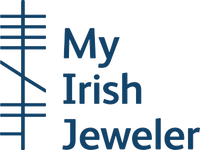

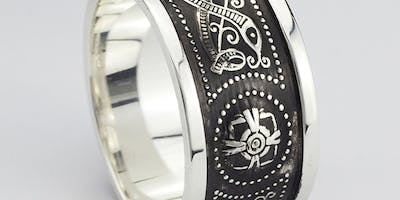

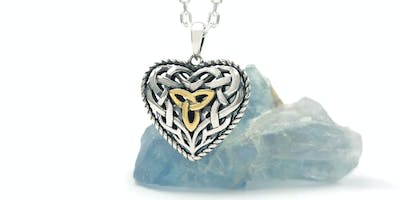
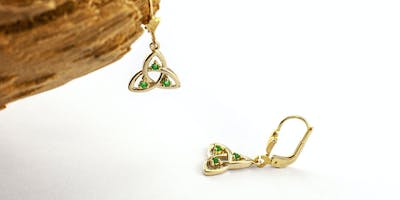

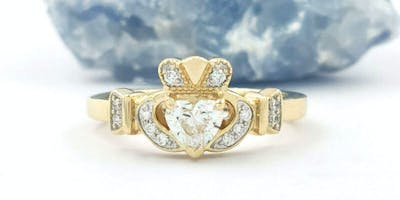
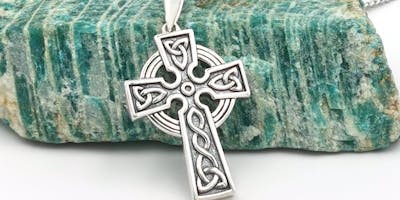
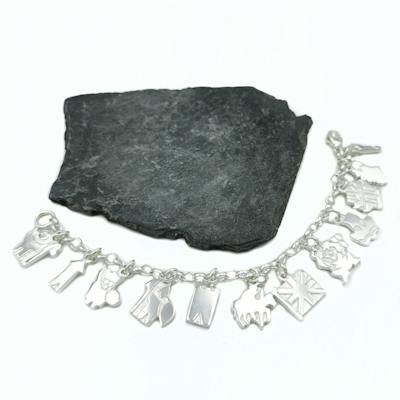
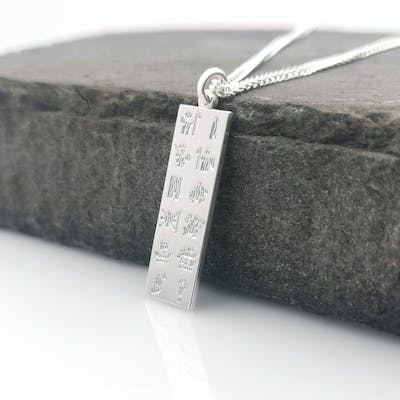
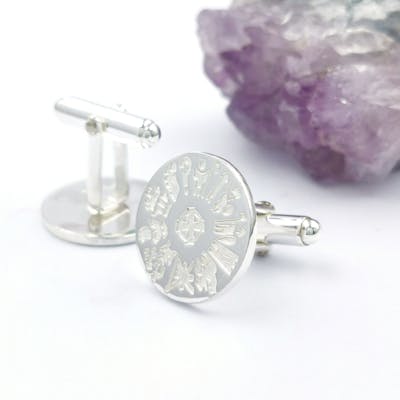
 Ask Gemma
Ask Gemma